#Sri Lanka engagement saree
Explore tagged Tumblr posts
Text
Exploring the Traditions: Matrimony in Sri Lanka
Sri Lanka, the resplendent isle, is not only a feast for the eyes but also a treasure trove of cultural traditions that have been woven into the fabric of its society. One such tradition that is vibrant with rituals and cultural mores is the Sri Lankan wedding—a celebration that goes beyond just marking the union of two individuals.
Embedded deeply within the roots of Sri Lankan society are various aspects of pre-wedding, wedding, and post-wedding ceremonies, each holding its own significance. In this comprehensive exploration of matrimony in Sri Lanka, we will take a step-by-step tour of the customs, cultural nuances, and insights into how modern influences are shaping this age-old celebration.
The Engagement: A Prelude to Promise
In most Sri Lankan communities, the engagement is more than just a pledge to marry; it is a celebration that reflects the joy and anticipation leading to the union. The engagement ceremony, known as the 'Nekatha', involves the parents of the couple agreeing to the marriage, followed by the exchange of rings. This simple yet critical ceremony is often hosted at the bride's house to signify the groom’s acceptance into the bride's family.
Rituals and Significance
Cultural rituals at the engagement represent the formal exchange of promises and intentions, emphasizing family unity and the promise of the future. This stage is laid with the seeds of commitment and serves as a prelude to the more intricate wedding ceremony to come.
Pre-Wedding Customs: More than Meets the Eye
Before the big day, Sri Lankan couples immerse themselves in a plethora of symbolic customs. From the 'Pendopas' ceremony where the wedding bill is signed to the 'Jayamongol', a ritual that brings good fortune, each step serves a purpose—one that is deeply rooted in tradition.
Preparing the Bride and Groom
Pre-wedding rituals are about preparing the couple for their new life, and practicing the values that will guide their matrimonial path. Family blessings during the 'Pendopas' and the 'Jayamongol' serve as a reminder of the couple's duty not just to one another, but to their extended families and the broader community.
The Wedding Day: A Tapestry of Customs
The day of the wedding in Sri Lanka is an elaborate affair. It typically begins in the morning with the couple separately adorned in traditional wedding attire, with the groom wearing the national costume and the bride in an elegant Kandyan saree.
From Dawn Until Dusk
The wedding day involves a series of religious and cultural ceremonies, such as the 'Poruwa' ceremony, which is a unique Sri Lankan tradition where the couple exchanges vows on a beautifully decorated traditional wooden platform. This is followed by the 'Nalangu' ritual, symbolizing the new bond shared by the couple, and the evening ends with the 'Kunitari' or the first meal shared by the newlyweds.
Post-Wedding Celebrations: Continuing the Joy
The wedding ceremony in Sri Lanka is never complete without the post-wedding festivities that symbolize the couple's integration into one another's lives. These events, such as 'Homecoming', allow friends and family to come together to celebrate the newly formed union.
The Significance of Celebrations
Post-wedding celebrations continue the jubilation and represent the couple’s social integration. In modern times, these events have also become an opportunity for the couple to express their individuality and include elements that resonate with them on a personal level. This fusion of modern preferences with traditional events has become a hallmark of contemporary Sri Lankan weddings.
The Role of Religion in Weddings
Sri Lanka is a multi-religious country, and the religious diversity is beautifully showcased in its wedding ceremonies. The customs and rituals associated with Buddhist, Hindu, Muslim, and Christian weddings vary significantly, yet all reflect the shared values of love, commitment, and family.
A Unifying Thread
Despite the differences, the role of religion in Sri Lankan weddings is a unifying thread that binds these diverse communities. The impact of religious teachings on marital life and the cultural practices associated with each faith is evident in the intricate details of wedding ceremonies.
The Influence of Modernity
Like all cultures, Sri Lankan matrimony is not immune to the winds of change brought about by modernity. The younger generations are infusing contemporary elements into their weddings, such as personalized vows, themed decorations, and various forms of entertainment. However, they are also keen on preserving the essence of their age-old customs.
Balancing Act
The fusion of traditional and modern aspects in Sri Lankan weddings is a balancing act that reflects the evolving nature of cultural practices. While younger couples are drawn to contemporary trends, they also hold deep respect for the heritage that these customs represent.
In Conclusion: Celebrating Unity and Diversity
The Sri Lankan wedding is an extraordinary display of unity amidst diversity. It is a celebration that encapsulates the core values of the vibrant island—love, togetherness, and respect for traditions. By understanding and cherishing the richness of these matrimonial rituals, we gain an insight into the heart of a culture that has thrived for centuries.
Through this exploration, it becomes clear that Sri Lankan weddings are more than just a personal endeavor; they are a communal celebration that binds generations together. In an age where rapid change often isolates us from our cultural heritage, the Sri Lankan wedding stands as a testament to the enduring power of tradition. It is an ode to the past, a celebration of the present, and a hopeful promise for the future—a future where the old and new can coexist in peaceful harmony.
1 note
·
View note
Link
#Best Engagement Sarees Collection#Best Engagement Sarees in Sri Lanka#Bridal Engagement Sarees#Bridal Engagement Sarees Collection#Brides Engagement Sarees Choice in Sri Lanka#Sri Lanka Bridal Engagement Sarees#Sri Lanka Engagement Sarees Deals
1 note
·
View note
Photo
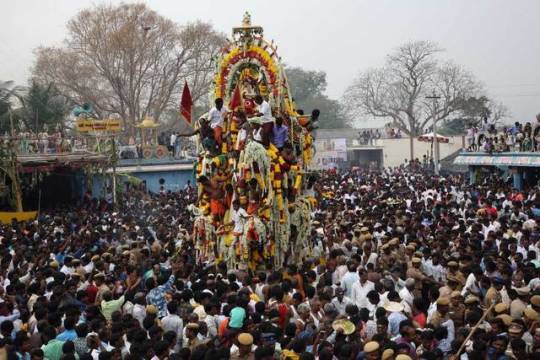
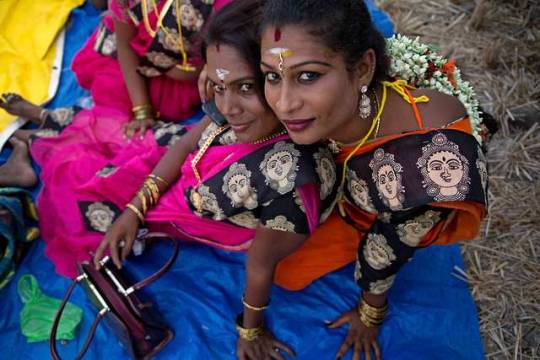
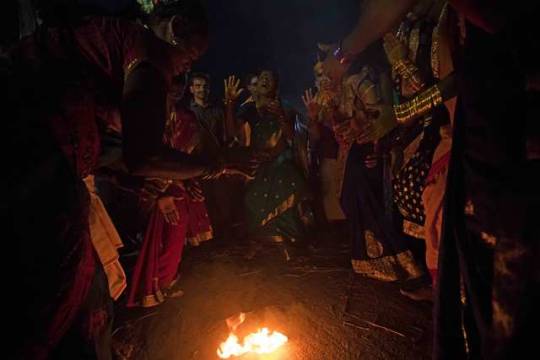
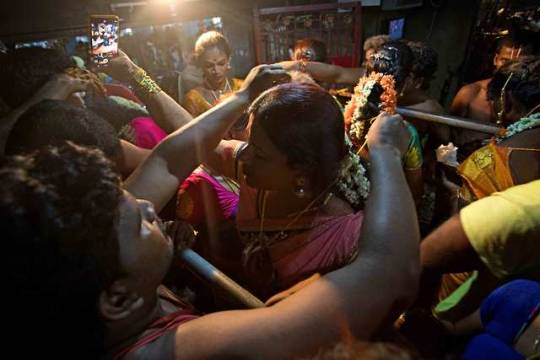
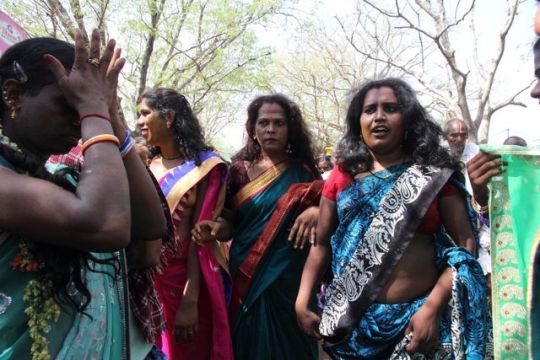

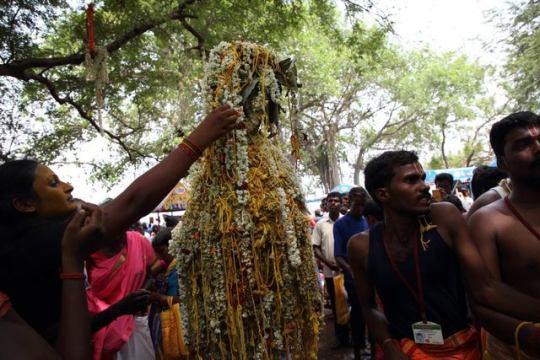
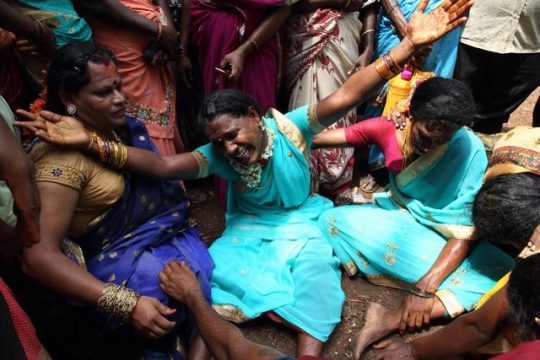
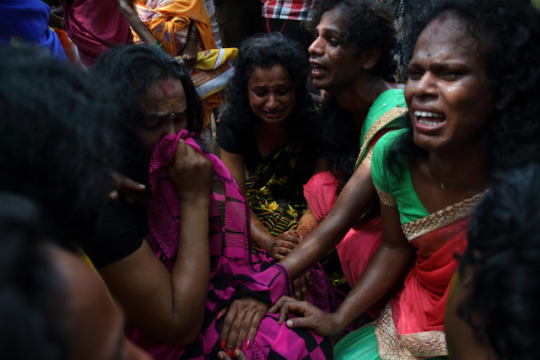
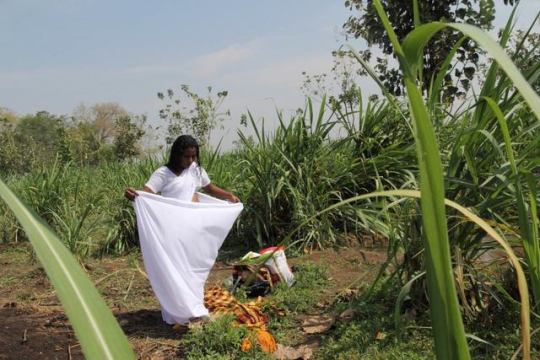
Aravan transgender festival.
Every year in the month of Chaitra (April/May), the sleepy village of Koovagam comes to life during an 18-day festival which is attended by people from the transgender community across Tamil Nadu.
I find the Koovagam festival one-of-its-kind in India, and I have been documenting it for a decade now. Although shooting in the extreme summer heat is a challenge, the vitality of the atmosphere compels me to return every year. The festival has gained much popularity, and is nowadays attended by transgender people as well as the larger LGBTQI community from across India, and even Sri Lanka and Southeast Asian countries.
The festival is held to commemorate a story from the Mahabharata, where Aravan, one of the sons of Arjuna, offers himself as sacrifice to ensure victory for the Pandava army in the battle of Kurukshetra. Aravan is the chief deity of the Kuttantavar cult and a divinity of the Draupadi cult in rural Tamil Nadu. He is also worshipped by the transgender people of the region, where they are known as aravanis or, more specifically, as thirunangai (for transgender women) and thirunambi (transgender men).
Koovagam is located around 25 km from Viluppuram, which is the nearest transport hub and district capital. When I attend the Koovagam festival, I stay at Viluppuram and commute daily to the village. The epicentre of the festival is the Kuttantavar temple in Koovagam village. The followers of Kuttantavar have 32 temples spread across the districts of Coimbatore, Erode, Vellore, Salem, Cuddalore, Tiruvannamalai and Villupuram in Tamil Nadu and the union territory of Pondicherry. The image of Aravan kept in the temple sanctum is only his severed head. His face is painted bright red, and he has a Vaishnava tika on the forehead, symbolic of his devotion to Lord Krishna. During the festival, the head and pupils are given a fresh coat of paint and brought out of the temple to be paraded through the village.
The three major rituals enacted during the Koovagam festival are the marriage between transgender women and Aravan, his sacrifice the next day, and his widowed partners mourning his death. The rituals are based on events from the Tamil renditions of the Mahabharata, where Aravan appears as the son of Arjuna and the Naga princess Ulupi.
According to these versions of the epic, Arjuna was married to the princess during his one-year exile in India’s Northeast. Aravan grew up as a splendid Naga warrior and participated in the battle of Kurukshetra on behalf of the Pandavas. On Krishna’s request, he offered himself as sacrifice to appease Goddess Kali, which was necessary to ensure victory for the Pandavas. Krishna, who was the main strategist for the Pandavas, offered Aravan three boons for his selfless act. His first boon was that his death in the battlefield would be heroic; the second boon was that he would be able to see the entire battle of Kurukshetra even after death. The third and final boon was that he would be married before he dies. Since no woman was willing to suffer imminent widowhood, no one volunteered. To fulfil Aravan’s third wish, Krishna transformed himself into the enchantress Mohini and married him. The marriage was consummated, and the next day Aravan offered himself in sacrifice to Kali. Mohini was heartbroken and mourned her widowhood, before she transformed back to Krishna. Of the three boons granted by Krishna, the first and third boons are ritualised by the Kuttantavar cult at the Koovagam festival, while the Draupadi cult includes only the second boon in their rituals.
The festival consists of various cultural events leading up to its climax on a full moon day. On the 14th day of the Koovagam festival, transgender women dressed as Mohini gather from daybreak at the Kuttantavar temple. For their marriage to Aravan, they wear their finest sarees, new bangles, gajras (floral garlands), gold jewellery and bridal makeup. They carry with them various puja items, kalasha (pot) and thali (mangala sutra or sacred thread) made of turmeric. In the sanctum sanctorum, a group of priests officiate the marriage ceremony and each transgender woman gets married to Aravan individually. The priests act as representatives of Aravan and tie the thali around their neck and apply sindoor (vermillion) in the partition of their hair, both symbols of marriage for Hindu women.
On that night and the next day, the transgender women may engage in sexual activities to mark the completion of marriage. On the 16th day, the image of Aravan is taken out in a procession. During this procession, followers of the Aravan and Draupadi cults along with onlookers gather for their deity’s darshan, and participate in pulling his chariot. The newly married transgender women gather at a designated ‘mourning ground’ called azhukalam. When the procession reaches there, the thick floral garlands and accoutrements are removed from Aravan’s effigy. This symbolises the removal of Aravan’s flesh during his sacrifice on the battlefield. After his death, his widowed partners collectively mourn by removing their thalis (mangala sutra) and smashing their bangles. They cry aloud, beat their chests and lament their widowhood, before bathing and changing into fresh white sarees as Hindu widows commonly wear. It should be noted that this widowhood is only symbolic and temporary, and the transgender women return to their usual colourful garments after a short period of time. They can return next year to repeat the marriage ritual.
One of the challenges of shooting the Koovagam festival is to avoid stereotyping and objectifying the transgender community. The festival is not just a cultural event but an occasion for the collective expression of transgender identity. Beyond the beautiful faces are hidden many struggles for social recognition, respect and equal opportunities which are lost when we eroticise them as a group. Gender is a powerful collective identity for the transgender community; it binds them. For cisgender people, it can be difficult to understand the gender dynamics. A festival like Koovagam is a rare occasion when the transgender community can openly flaunt their sexuality and gender identity in public without facing censorship or mockery. This is as much a political statement as a cultural one. The collective lamentation of Aravan’s death can also be seen as the community’s catharsis and their collective protest against the discrimination they face in society.
Photos and text by G. Pattabiraman
61 notes
·
View notes
Link
engagement sarees
#engagement sarees#engagement sarees Sri Lanka#Sri Lanka engagement sarees#Wedding engagement sarees#Sri Lanka Wedding engagement sarees#Sri Lanka engagement dress#engagement saree#engagement saree Sri Lanka#Sri Lanka engagement saree
0 notes
Text
Saree Shopping Sri Lanka
Saree Shopping Sri Lanka
Best online saree shopping website in Sri Lanka – Latest Saree Designs
Here you can find many different type of wedding saree jacket designs, with large collection of colors and different materials.

#srilanka #saree #sareesrilanka #sareeonline #weddingdress #dress #sareeshopping #fashion #wedding #weddingsaree #australia #canada #UK #London #engagement #bridalsarees #bridalfashion #bridetobe #bridesmaids #weddinginspiration #weddingideas #honeymoon #weddingvenue #outdoorwedding #beachwedding #weddingring
1 note
·
View note
Text
Simple homecoming Saree
Simple homecoming Saree Most beautiful homecoming sarees in Sri Lanka and bridal going away saree with latest jacket designs for our beautiful brides and girls. Now you can buy sarees online shop. https://saree.lk/products/red-homecoming-saree-designs/ #srilanka #sareesrilanka #saree #sareeslk #fashion #wedding #engagement #dress #bridetobe #bridesmaids #weddingdress #weddingideas #honeymoon #outdoorwedding #beachwedding #engagement #registration #homecoming #goingaway
0 notes
Text
Wedding Saree Blouse
Wedding Saree Blouse Designs
Select the Best Saree BLOUSE designs for Your SAREE.
Here you can find many different type of wedding saree blouse designs, with large collection of colors and different materials.
https://weddingsareesrilanka.com/sri-lanka-saree-blouse-designs-2021/

#srilanka #saree #sareesrilanka #sareeonline #weddingdress #dress #sareeshopping #fashion #wedding #weddingsaree #australia #canada #UK #London #engagement #bridalsarees #bridalfashion #bridetobe #bridesmaids #weddinginspiration #weddingideas #honeymoon #weddingvenue #outdoorwedding #beachwedding #weddingring
0 notes
Text
Why are Ganeshji Sketches so popular? A Review of Indian Art
Indian Art involves a variety of expressive artworks, including sketches, pottery, and fabric art. Geographically, it navigates the entire Indian subcontinent, including India, Pakistan, Bangladesh, Sri Lanka, Nepal, Bhutan, and eastern Afghanistan. Strong sentiment of arrangement is typical for Indian art and can be found in its progressed and standard structures.

Ganesha by Kirtraj Mhatre
The conventional Hindu works of art, in temples, on sarees, on canvases, portray patterns of paisley, peacocks, and so on. Some portray adventures of Ramayana and Mahabharat, with illustrations of Ram-Sita and even God Hanuman. The Hanuman drawing and sculpture are frequently made in a single color - orange. Certain symbols and colors are associated with particular mythos and are utilized to underline their specific stories.
Indian art, as we know it today, has its establishments spread across over centuries, the earliest structures beginning from around 3500 BC. As a country, India achieved huge respect because of its extensive social inheritance acquired over such a long period.
Indian Temples remain as living, imperishable monuments of art. Their influence and essence originate from before to the time of kings. Various acclaimed havens in India have displayed an amazing range of skilled artists who made them.
For instance, the Sun Temple in Konark [Orissa], Ajanta and Ellora Caves in Maharastra and a couple of various spots have pulled in untouchables with the phenomenal models they have. The India Art was engaged by a couple of pioneers of the Mourya, Chola, Pandava and all of the lines that anytime existed in India.
Symbols associated with deities and spirituality like the Hindu Swastik and the Omkar image are found in pretty much every Hindu home in the nation. Shivoham (I am Shiva) is a typical chant used for reflection, and numerous contemporary artists utilize these images and chants to make otherworldly abstract art. Lord Ganesha is a very common image in many Indian artworks, Ganeshji sketch, paintings, and sculptures often adorn the homes of many Hindus.

Art and artists in India have amazingly affected Indian culture, traditions, and history. But on the other hand, it is this dazzling history which has been identified as a protector among the most staggering and evolved art narratives of the country.
The Indian subcontinent has reliably been the supply of expertise, be it in the field of art, science, composing, or any other field. In any case, outstanding emphasis should be given to the renowned Indian art and its various compositions.
The craft of this country, be it creations or shapes or even traditional works like Rangoli, has always amassed appreciation from people living in every corner of the world.
The Indian subcontinent is outstanding for being the country of source of a tremendous number of inconceivably impressive artists, including painters, writers, etc. The specialty of painting in India returns to old events, as is clear from the cave art of Ajanta and Ellora.
Various painters of India have received great appreciation and their imaginative displays have earned huge rewards worldwide. From the representations turning around religious subjects to the dynamic ones, Indian painters have verified for all intents and purposes each and every field.
The custom of painting has been carried on in the Indian subcontinent since old events. Staying at a presentation to this the truth is the awesome wall art of Ajanta and Ellora, Mughal and Kangra schools of Indian imaginative creations, etc. Indeed, records have been found that demonstrate the usage of fine arts for improving the passages, guest rooms, etc. Some traditional Indian canvases, like those of Ajanta, outline love for nature and its forces.
Essentially, works of art portraying renowned religious figures and rulers from ever religion is additionally, right up 'til the present time, a significant mainstream practice. Like craftsmanship delineating Chatrapati Shivaji, Emperor Akbar or figures like Saint Dynaneshwar or Buddha, or Guru Nanak Dev ji and so forth is presently made in contemporary artists.
1 note
·
View note
Link
#Engagement Sarees Suppliers#Best Engagement Sarees in Sri Lanka#Brides Engagement Sarees Choice in Sri Lanka#Handmade Engagement Sarees in Sri Lanka#Sri Lanka Bridal Engagement Sarees#Sri Lanka Engagement Sarees Choices#Sri Lanka Engagement Sarees Designs
0 notes
Link
#Engagement Sarees Shops#Engagement Sarees Shops in Sri Lanka#Engagement Sarees Stores#Sri Lanka Engagement Sarees Dealers#Sri Lanka Engagement Sarees Deals#Sri Lanka Engagement Sarees Designers#Sri Lanka Engagement Sarees Designs
0 notes
Link
#Sri Lanka Engagement Sarees Picks#Sri Lanka Engagement Sarees Sale#Sri Lanka Engagement Sarees Shops#Sri Lanka Engagement Sarees Stores#Sri Lanka Engagement Sarees Suppliers#Sri Lanka Engagement Sarees Vendors#Engagement Sarees Choice in Sri Lanka
0 notes
Link
#Engagement Sarees Suppliers#Best Engagement Sarees in Sri Lanka#Bridal Engagement Sarees#Bridal Engagement Sarees Collection#Brides Engagement Sarees Choice in Sri Lanka#Handmade Engagement Sarees in Sri Lanka#Sri Lanka Best Engagement Sarees Collection
0 notes
Link
#Sri Lanka Engagement Sarees makers#Sri Lanka Engagement Sarees Options#Sri Lanka Engagement Sarees Picks#Sri Lanka Engagement Sarees Rental#Sri Lanka Engagement Sarees Sale#Sri Lanka Engagement Sarees Shops#Sri Lanka Engagement Sarees Stores
0 notes
Link
#Engagement Sarees Suppliers#Best Engagement Sarees Collection#Best Engagement Sarees in Sri Lanka#Bridal Engagement Sarees#Bridal Engagement Sarees Collection#Handmade Engagement Sarees in Sri Lanka#Sri Lanka Best Engagement Sarees Collection
0 notes
Text
Saree Online Sri Lanka
Saree Online Sri Lanka
Best Online Sarees Sri Lanka – Buy Saree Online
Here you can find many different type of wedding saree jacket designs, with large collection of colors and different materials.
https://onlinesareesrilanka.com/saree-online-sri-lanka/
#srilanka #saree #sareesrilanka #sareeonline #weddingdress #dress #sareeshopping #fashion #wedding #weddingsaree #australia #canada #UK #London #engagement #bridalsarees #bridalfashion #bridetobe #bridesmaids #weddinginspiration #weddingideas #honeymoon #weddingvenue #outdoorwedding #beachwedding #weddingring
1 note
·
View note
Text
Engagement Saree Designs
Engagement Saree
Gorgeous normal engagement sarees in Sri Lanka and simple registration saree with latest designer jacket designs
https://saree.lk/engagement-saree-sri-lanka/
#srilanka #sareesrilanka #sareelk #saree #sareeslk #fashion #wedding #engagement #dress #bridetobe #bridesmaids #weddingdress #weddingideas #honeymoon #outdoorwedding #beachwedding #engagement #registration
1 note
·
View note